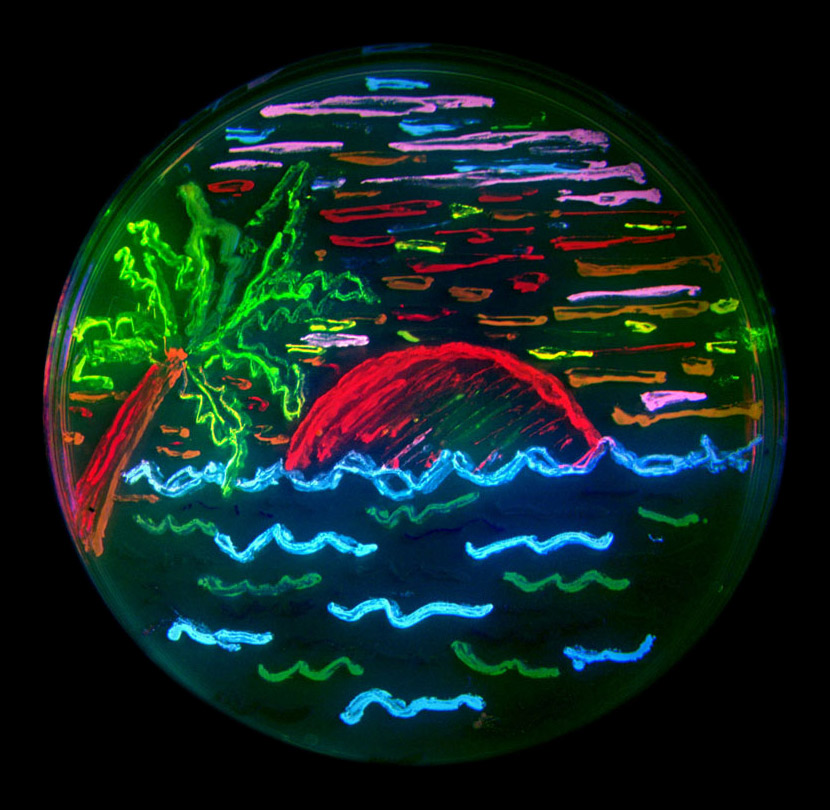I recently had the privilege to attend a lecture by Dr Roger Tsien, one of the three 2008 Nobel laureates for chemistry. His talk was fascinating, so I thought I would kick-off my brand new science blog by telling you a little bit about the reason these guys got the Nobel prize and why it’s relevant science.
The 2008 chemistry Nobel prize was awarded for the discovery of GFP, which stands for Green Fluorescent Protein. It was isolated from a jellyfish, and it fluoresces green when exposed to blue light, hence the name. You’d think they’d come up with a more exciting name, but lately it seems acronyms are all the rage. I wouldn’t blame you if you thought that a fluorescent protein would be very cool, but overall useless (kind of like those fluorescent lights some people like to “pimp up” their cars with). However, the Nobel prize committee is not known to award prizes for useless discoveries.
GFP has become one of the most widely used and studied proteins in biology research, because you can use it and manipulate it to make it work for you. For example, you can use GFP as a tag: by choosing specific proteins or genes and then labelling them with a fluorescent GFP tag, you can look at where the proteins are distributed and where the genes are expressed in a single cell all the way up to in a whole animal. Used as a tag, GFP can also change the way we use models to study specific questions. Let’s say you’re interested in studying Parkinson’s disease. This disease targets a specific kind of brain cell called dopamine neurons. Using GFP, you can engineer a mouse so that only dopamine neurons are fluorescent, making the study of those neurons much, much quicker and simpler.
In addition to tagging applications, GFP can also be used as an active indicator. Scientists have been mutating (yes, on purpose!) GFP to make it sensitive to the environment or to interactions with different proteins. For example, you can make GFP sensitive to how much calcium is in a cell, which allows you to visualize dynamic calcium changes in living cells. Who cares, right? Well, if you know someone with Alzheimer’s disease, you might care. The amount of calcium needed to keep your cells healthy is held in a very delicate balance, and in some diseases, like Alzheimer’s, this balance is tipped, which is bad news for your brain cells. Getting back to GFP, this means that being able to tell what influences the calcium balance using tools like calcium-sensitive GFP is the first step in finding good therapies for preventing and curing certain diseases.
So why is the discovery of GFP relevant science? It’s a tool that has tremendously sped up many aspects of research in health-related fields. New generations of fluorescent molecules offer even more real-life applications: some labs are working on making tumors glow for easier surgical removal. So next time you see a jellyfish laying on the beach, resist the urge to poke it with a stick (so hard, I know...). It is making a great contribution to health research. It also allows bored scientists to make really cool works of art:




One response to “The jellyfish's contribution to science”
When we transformed E. coli with gfp containing plasmids in my cell bio lab I wanted to bring them home so bad, instead they went to the autoclave, poor bugs! Belated welcome to the blogosphere from one science nerd to another =).
Post a Comment